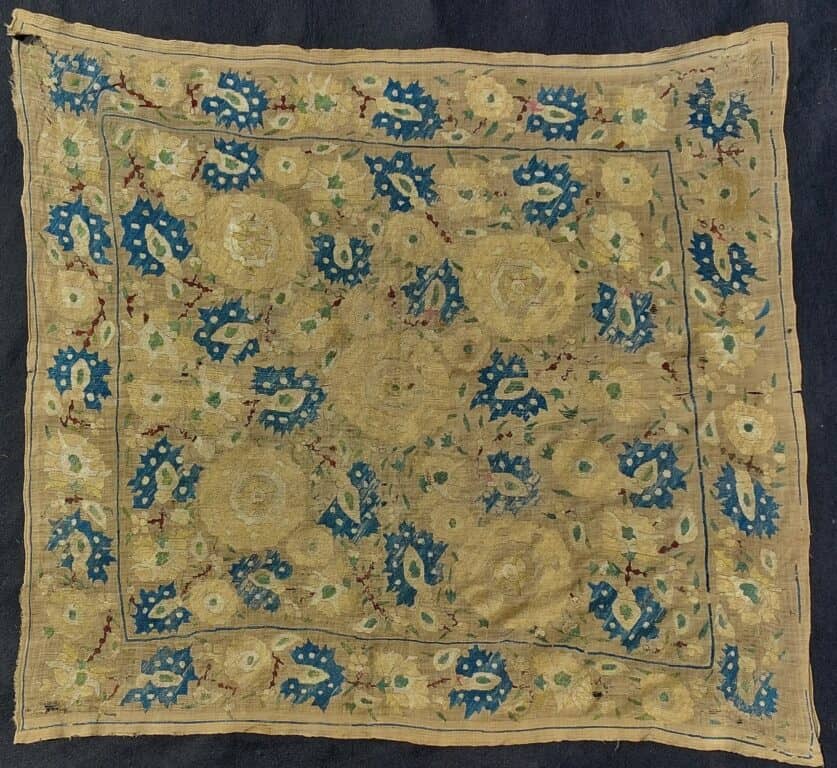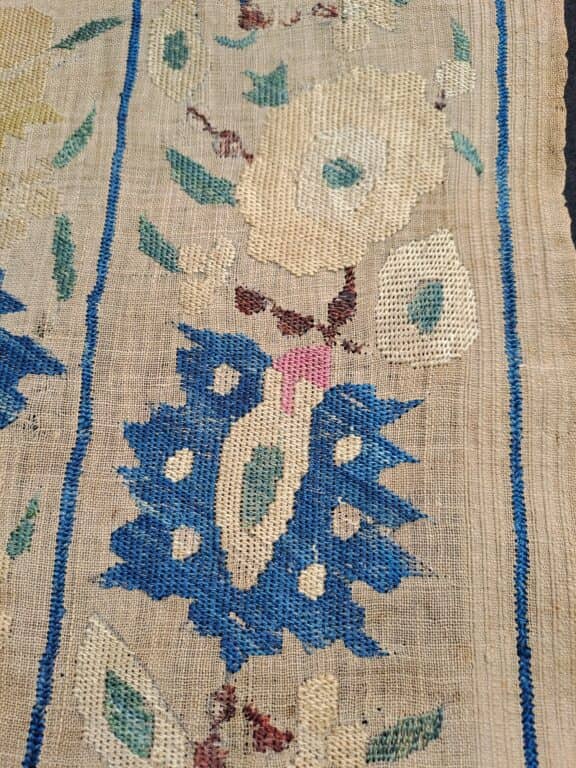Ottoman Embroidered Bohca
Description
This Ottoman embroidered bohca, or wrapping cloth, dates to around 1700.
It is a fine silk embroidery worked on hand woven, undyed linen made in a plain weave, with only sparse linear patterning on the outside edges. The linen backing material consists of two panels almost invisibly sewn together in the middle of the textile. The panel widths correspond to the loom sizes available at the time (according to Sumru Belger Krody, they were usually between 45 and 56 cm in width – see her excellent book accompanying the exhibition of Ottoman textiles held by the Textile Museum Washington, D.C., in celebration of their seventy-fifth anniversary in 2000, Flowers of Silk and Gold. Four Centuries of Ottoman Embroidery, page 35).
The colour palette of the embroidery threads is subtle and quite limited: a light blue, a light green, a very soft yellow and two shades of an even lighter gold to silvery gold, plus some dark brown and small areas of a soft pink. The pattern has clearly been drawn in ink on the front of the fabric and then embroidered after assembly, a practice which is reminiscent of the way central Asian suzanis were produced. The drawing is still showing in places where the embroidery did not quite cover it or where the silk has slightly rubbed off with age and use. A textile with a very similar colour combination is published by Belger Krody : it is the mirror cover on Plate 27, pp. 126 – 127, of the above mentioned publication.
These embroideries were usually produced in workshops and referred to a well known pool of designs often employing a repeat of an all over pattern encompassing various flower motifs. The latter were not arranged in a natural, organic alignment but served a decorative purpose. The bohca in hand proves this point. It has a very thin blue line to mark out the large area in the centre and the outer edges of the complete textile, thus creating a distinction between a “field” and a “border”.
This is an elegant embroidery and a beautiful example of textile art.
POR


